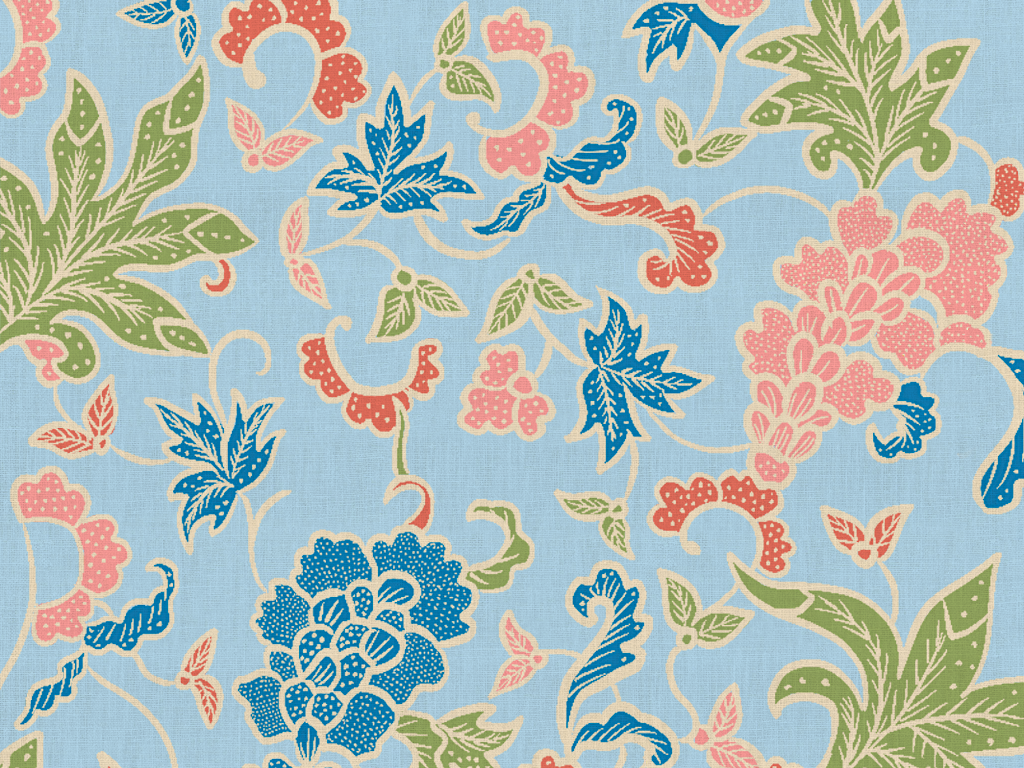You can read part one here.
As an entrepreneur dealing with batik, a lot of my time is spent on two things: explaining batik prints to people (beyond what is batik) and researching batik. These two areas go hand in glove, and the deeper I dive into this area of study, the better my ability to convert new customers into batik enthusiasts. Ironically, this task is also what’s missing in batik’s modern literature among sellers and traders who tend to focus on making profits rather than studying provenance. It is common today to find many batik sellers and wearers unable to discuss batik confidently. And worst of all, confusing Malaysian batik prints with Indonesian batik. However, with roots dating as far back as to the ancient Egypt civilization, it’s not an easy feat to comprehend with a conversation. Most contemporary batik prints found today may appear straightforward. Its backstory, however, is as complex as it is spellbinding. Personally, it is a scholastic endeavor.
“Destiny itself is like a wonderful wide tapestry in which every thread is guided by an unspeakable tender hand, placed beside another thread and held and carried by a hundred others.” ? Rainer Maria Rilke
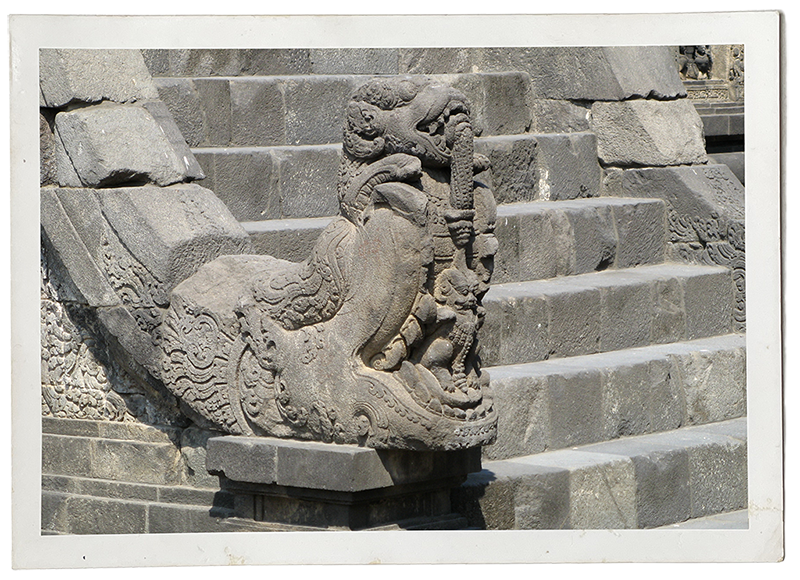
This is true for batik and the stories of its prints. Rich in history, the batik motif is a story about life’s journeys, its communities, and its legacy — journeys that crossed continents inspired by myths, legends and majesty. Its roots are ancient but how far back remains a mystery. Some scholars argue that batik originated in India before being brought to Egypt. Thanks to Marco Polo and his silk road travels, we are fortunate that batik traversed to the four corners of the earth because textiles were among the sought after commodities traded along with spices. As a result we have thousands of different batik designs for every purpose and ceremony under the sun.
According to the Batik Guild UK, “Evidence of early examples of batik have been found in the Far East, Middle East, Central Asia, and India from over 2,000 years ago. It is possible that these areas developed independently, without the influence of trade or cultural exchanges. However, it is more likely that the craft spread from Asia to the islands of the Malay Archipelago and west to the Middle East along the caravan trading route.” And how do we know this…from the prints, the motifs, and patterns.
For the purpose of this article I will focus on batik designs within the Malay world (also known as the kingdoms of the Malays, now known as Malaysia and Indonesia). Many of the motifs we see within the Southeast Asian basin have common signatures rooted within the Javanese literature, with tentacles of influences from around the world. The Javanese, known as Indonesian Orang Jawa, make up the largest ethnic group in Indonesia and can be found in Central Java, Yogyakarta, East Java, Lampung, and Jakarta. The Javanese language belongs to the Austronesian (Malayo-Polynesian) family.
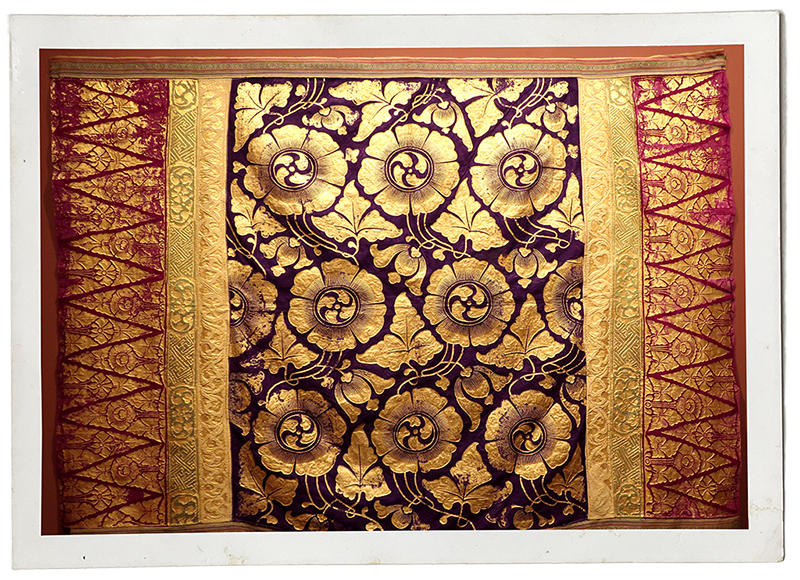
Javanese batik alone permeates the story of batik. Its batik is so pervasive and remarkable that in September 2009, Indonesia nominated Indonesian batik for inscription on the Representative List of the UNESCO Intangible Cultural Heritage of Humanity. Batik satisfies the criteria for inscription on the Representative List as follows:
“Indonesian Batik has a rich symbolism related to social status, local community, nature, history and cultural heritage; provides Indonesian people with a sense of identity and continuity as an essential component of their life from birth to death, and continues to evolve without losing its traditional meaning” (UNESCO).
After the nomination on October 2, 2009, batik was named as a Masterpiece of Oral and Intangible Heritage of Humanity to protect the art as an icon, symbol, and cultural representative of Indonesia. This recognition was long overdue.
The history of batik in the Malay world started from the development of the Majapahit kingdom. The earliest known written reference to batik is in a Dutch bill of lading in 1641 connected to a shipment from Batavia in Java to Bengkulu on the west coast of Sumatra, Indonesia. It was also within this period that we have documentation of the siege and capture of Malacca. This is seminal with the batik diaspora. According to the Malaysian Branch of the Royal Asiatic Society:
“Malacca was once the capital of the kingdom of Malays. When the Portuguese Don Lopez de Sequera appeared for the first time in the year 1509, the city was in a flourishing state being the greatest trade centre or emporium in East India; Arabs, Persians, Gujaratis, Bengalees, Portuguese, Siamese, Javanese, Chinese, Luzons, etc., were there carrying on trade.”
In the Malay kingdoms, cultural meaning is communicated orally. While Hinduism had a major influence on the development of culture and influences batik to a significant degree in terms of imagery, its prints carry various symbolic meanings expressed using colors and motifs, which make batik patterns an expressive visual form. According to historian Siti Zainon, “Elements of Hindu culture had a deep and lasting effect on the socio-culture of Malay society that encompassed literature, religion and beliefs. It is believed that the development of handicraft in the Malay world was influenced by Hindu culture.”
Juhri Selamet, in his article Indonesian Batik Translation: A Case Study states “Batik symbolism developed by culture, in the end, gives the fabric visual communication skills.” And there was always so much to convey about life, philosophy, and the state of social order. He explains:
“Javanese traditional culture mostly corresponded to the living systems through batik’s visual appearances and representation. The visual aesthetics are primarily seen in various forms, including colorization and geometrical shapes, as reflected in Javanese cultural artifacts. For instance, the Parang (machete) as a batik pattern was mainly arranged using diagonal lines, thus becoming a symbol for continuity as the designs interpret them in various ways. There are presumptions that the word Parang means “steep slopes” according to the Javanese culture, thus denoting the struggles of life.”
The social structure of Malay society is the feudal system. Under this system, the social structure was segregated based on social status in a traditional way that divided it into two main dominant groups: the aristocracy in the palace was comprised of royalty and court officials; and the commoners who lived in the villages, the fringes of the seaside, and in the jungle. Some experts debate that batik was originally reserved as an art form for royalty. Indeed certain patterns were reserved to be worn only by royalty from the Sultan’s palace. This was a way to distinguish not only bloodlines but sovereignty. A person’s rank could be determined by the pattern of the batik he/she wore. Among the common folks, colours and patterns of a batik sarong can determine a woman’s availability (single/ married/ widow) without speaking.
Aside from status, there is also the matter of mysticism. It was thought that certain cloth had mystical powers to ward off ill fortune, while other pieces could bring good luck. The patterns are partly influenced by ancestral practices and rituals of paganism and animism. For example, there are symbols which are popular for protection and guardianship. Dragons (nagas) are found in reliefs in the archipelago, made into forms of Makara ornamental patterns. Makara in Sanskrit refers to a sea creature that guards gateways, thresholds, and entryways. Makaras are usually depicted with another symbolic animal, such as a lion, naga, or serpent, emerging from its gaping open mouth. Commonly facing upwards as if climbing towards heaven, this symbol can also be found in sculptured gates, entrances, stairs, or on roofs of houses like the gargoyles in Europe.
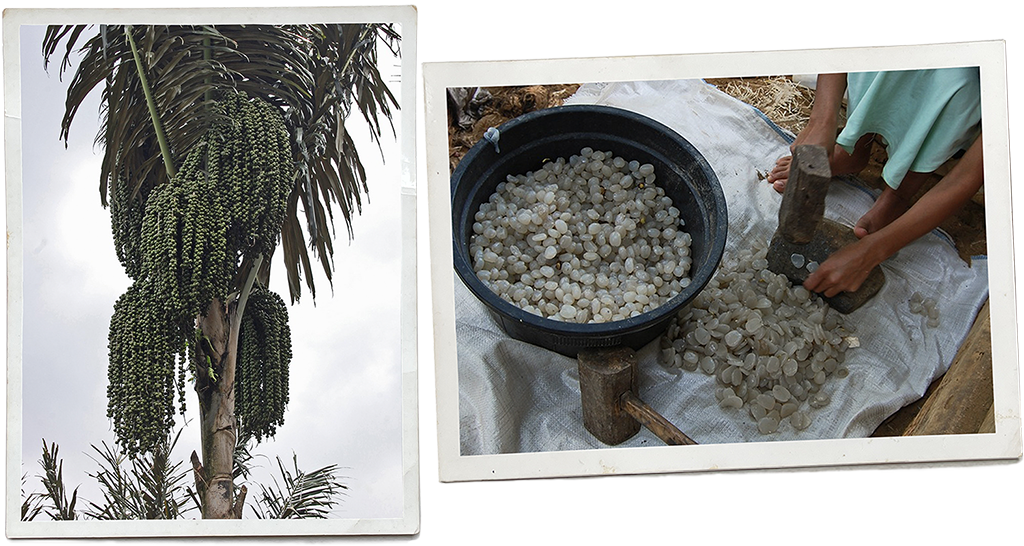
The significance with the Makaras has to do with the Javanese belief in the primordial division of the worlds: upper world, middle world, underworld. Dragons are the most popular and symbolize the underworld in the forms of serpents. In the traditional wayang story (wayang which means theatrical performance), a figure of God named Sang Hyang Antaboga can transform into a dragon living in the seventh layer or Sapta Pratala. As daunting as it sounds, to the commoner, especially to the paddy farmers, the dragon symbolizes blessings, fertility, and security.
Dragon motifs are ubiquitous throughout Asia, but it may take a discerning eye to tell its differences, especially in Javanese batik. Dragon symbols throughout China are drawn with legs; the Javanese dragons are depicted without legs, resembling, or that can easily be mistaken for, a giant snake. These legless dragons can be seen wearing a crown (badhong) or ornamented with earrings and necklaces symbolizing stature, wealth and authority. Known as Nogo Rojo, a snake with a crown symbolizes a king (which at the time also represented God). Nogo Rojo or Semen Nogo Suro represents greatness, power and intellect. The Peksi or bird, is an acculturated motif from Chinese culture. It symbolizes freedom and happiness.

In general, there are two categories of batik design: geometric motifs and free form designs based on stylized patterns of natural forms. Ceplok is a general name for a series of geometric designs based on squares, rhombs, circles, stars, etc. One omnipresent design is the Kawung batik.
Kawung is an old motif shaped like a girdle arranged on four square corners. The name Kawung comes from the Javanese word Suwung that means emptiness. This design has appeared carved into the walls of many temples throughout Java such as Prambanan near Yogyakarta and Kediri in East Java. For many years, this pattern was reserved for the royal court of the Sultan of Yogyakarta. According to Nimas Ayu Pramesti, Hajar Pamadhi and Anom Garbo in their study, ‘Local Wisdom Values in Kawung Batik and Its Relevance to Moral Education’, “Kawung’s name and motif are reported from two sources. The first is the Kwangwung insect, and the second is the Kolang-Kaling fruit. The Kawung motif has several Keraton (palace) banned motifs, only allowed to be used by the royal community.” This motif, according to research, has been around the world since the 9th century but only began to develop in the era of Ngayogyakarta Hadiningrat Sultanate in 1755. The Kawung batik has several meanings, notably “a person with perfect self-control” and “a clean heart without any desire for joy”. Supposedly created by Sultan Mataram who was inspired by the fruit of the palm tree, the Kawung motif carries the philosophy that the palm tree, from leaf tips to the roots, are beneficial for human life, implying that one must not only contribute to society, but that everyone is created with a purpose. Another point of view is through geometry. The Kawung motif is surrounded by four circles or rectangles creating a collection of stars. Pramesti, Pamadhi, and Garbo describes:
“In the Javanese culture, there is a view that stems from the concept of “Sedulur papat limo pancer”. This has an understanding that continues to evolve from pre-Islamic times to Islamic times. This motif is the expression of the principle of the mandala, namely the composition of four angina eyes with a one-way center. Understanding the origin is the alignment between the small universes (humans with the microcosm) along with a large form in the universe (humans with the macrocosm). The understanding of the four brothers in the great universe is the four directions of wind, namely east, west, south and north whereas the pancer or the middle is the self or human conscience.”
My fascination for Kawung stems from stories of its magic. Literally. In an article by Siswomihardjo titled ‘Pola Batik Klasik, Pesan Tersembunyi yang Dilupakan’ he chronicles how the geometry in batik possesses powers as well as hallmarks of ancient Javanese culture:
“The insight of the ancient Javanese emphasizes that the motives are purely geometric and contain enormous magical powers. Therefore, those who wear Batik of that pattern must also have the strength in themselves, or the power of linuwih in the Javanese language, to be able to compensate for the magical power in the motif. In addition, a high level of wisdom is still required because a large amount of power or strength unaccompanied by a balanced level of wisdom can cause disasters.”
The coming of Islam to the Malay world in the 13th century eroded the influence of Hinduism in the lives of the Malay people. This is evident in Malaysia more than in Indonesia. The teachings of Islam influenced all of their activities, particularly arts, crafts, and performances. Islam forbade designs based on depiction of living things such as man and animals. From the perspective of the philosophy of creation, the motifs produced are for ornamental purposes and at the same time for the purpose of monotheism. Nature motifs or arabesque was a style that did not conflict with Islamic teachings. Symbolic Hindu motifs such as kala (carved flower), makara, gunungan (mountain), pohon beringin (bodhi tree), stupa, padma/teratai (fragrant flowers) and garuda/jentayu (phoenix) were replaced by plant motifs and stylised Islamic calligraphy. According to historians, the plant motifs selected are the type which have significance in Malay society such as its edibility, medicinal values and aesthetics (beautifully-shaped leaf) and fragrant scent. Most importantly, these plants do not have any nuances from the traditional animistic practices.
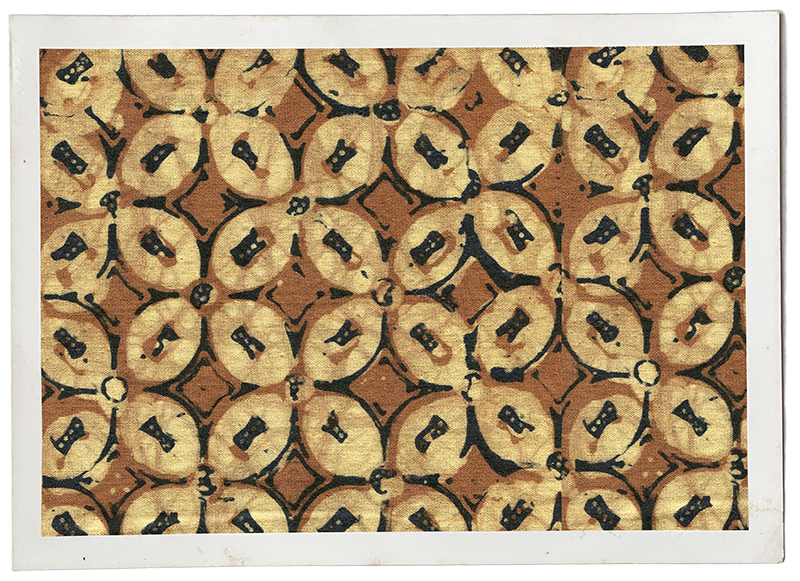
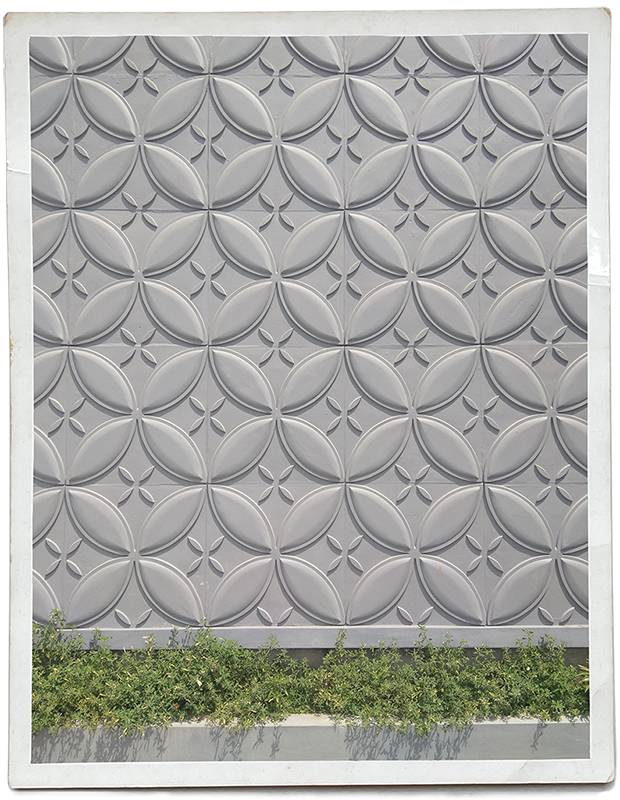
Traditional colors for central Javanese batik were made from natural ingredients and consisted primarily of beige, blue, brown, and black. The oldest color used in traditional batik making was blue made from the leaves of the indigo plant. In traditional batik, the second color applied was a brown color called soga. The color could range from light yellow to a dark brown. The dye came from the bark of the Soga tree. Another color that was commonly used was dark red.
For special occasions, batik was formerly decorated with gold leaf or gold dust. This cloth is known as Prada cloth. Found in the Yogyakarta and Surakarta area, gold dust was applied to the fabric using a handmade glue consisting of egg white or linseed oil and yellow earth. The gold would remain on the cloth even after it had been washed. Today however, the gold leaf and dust are replaced by paint.
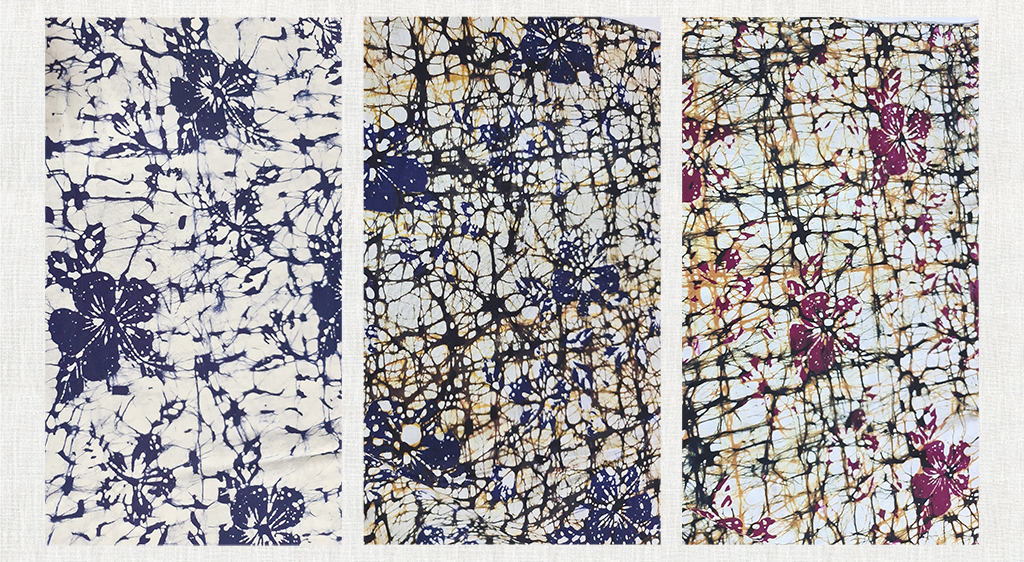
Colors, too, have certain symbolic meanings. In batik, color is a symbol of human character. When customers eye a fabric, I always advise them to hold it against their skin. When a batik is folded, you cannot see a few things: its full potential as a 2-5 meter opened fabric and how it resonates with your temperament. The latter is important to avoid the print overwhelming the wearer, thus overriding one’s personality. A batik piece cannot have too many colours. A standard practice is to use not more than four (such as the colour cartridges in a printer). The goal is to create a composition built on harmony so the wearer gains more confidence and social presence. Certain areas are known for a predominance of certain designs. Batik from the north coast of Java, near Pekalongan and Cirebon, have been greatly influenced by Chinese culture and effect brighter colors and more intricate flower and cloud designs (awanan). In Malaysia, batik production hails from the coasts of Kelantan and Terengganu. Much inspired by the sea and flora environment, colours are vibrant as a way to make up for lack of complexity in motifs due to the strict practices of Islam.
The next article will discuss governance, the current affliction of batik artisans, and the industry’s future.
